With the fermentation of the Azuki incident, both the NFT community and industry are facing challenges. Not only have major blue-chip NFT collections experienced varying degrees of decline (see "Azuki team embezzled 20,000 ETH, but NFT market lost 200,000 ETH of liquidity"), but many NFT lending platforms are also under pressure (see "Significant decline in blue-chip NFTs, NFTFi accepts the challenge").
The market even speculates further whether the further decline in NFT prices will trigger a chain of liquidation in lending, leading to a new round of price spiral stampede for NFTs?
How Prosperous is NFT Lending?
With the development of NFTs, various new projects and protocols continue to emerge in the entire NFTFi market.
So, how many NFT lending platforms are there currently? As a relatively "in-demand" product in the NFT field, there are countless lending protocols. Only alchemy has included 42 NFT lending products. However, most of these products are not popular, making it difficult to obtain data. This article does not take this list as a research subject.
Data from DeFiLlama shows that currently 23 NFT lending protocols have been included and listed in their statistics. As of the time of this article's publication, the total TVL of the 23 protocols has reached 1.89.
Current TVL in the NFT lending market is zillion dollarsFrom the data alone, this number is quite considerable. If we use FT for an unequal comparison, the total TVL of 264 FT (homogeneous tokens) lending protocols is as high as 14.7 billion dollars, which is 77.7 times the TVL of NFT lending. And the total market value of FT is about 1.2 trillion dollars, which is 200 times the total market value of NFT, which is 6 billion dollars.
Although there are numerous protocols, only a few are recognized by the market based on the data.
In the NFT lending products, the TVL of 5 protocols has reached millions of dollars, and the TVL of 4 protocols is between one million and tens of millions. The top protocols have a clear advantage, with the combined TVL of ParaSpace and BendDAO platforms totaling around 91 million dollars, accounting for approximately 48% of the total TVL of all NFT lending protocols.
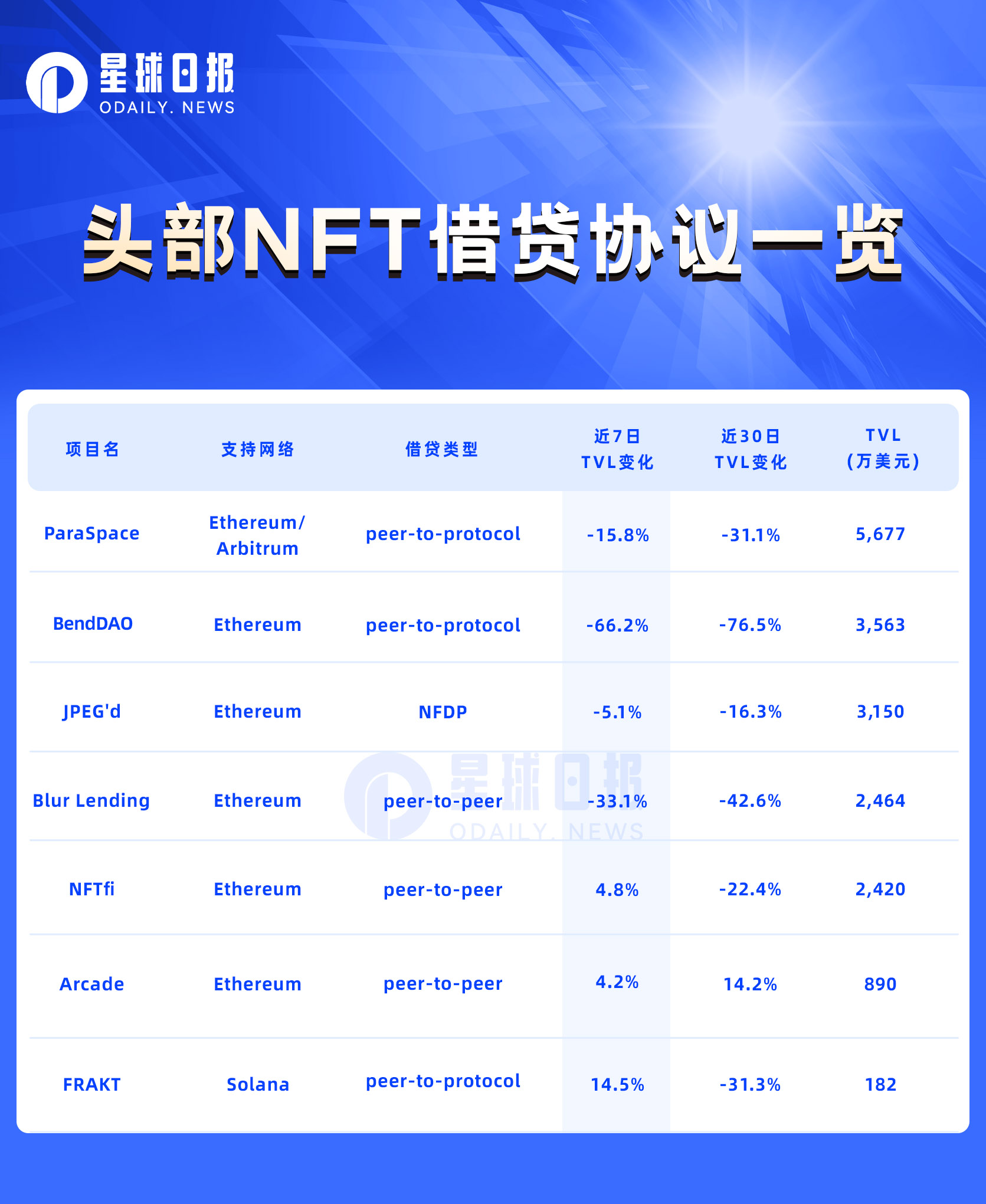
Flexible, "traditional" P2P lending injects liquidity into long-tail assets
In May of this year, the famous NFT trading platform Blur introduced the NFT lending protocol called Blend, thus entering a new track in the NFT market. Similar to Blur, NFTfi and Arcade are also NFT lending protocols that use the P2P model.
Taking NFTfi as an example, the protocol is a peer-to-peer (P2P) NFT lending protocol, which is currently the mainstream form of NFT lending.
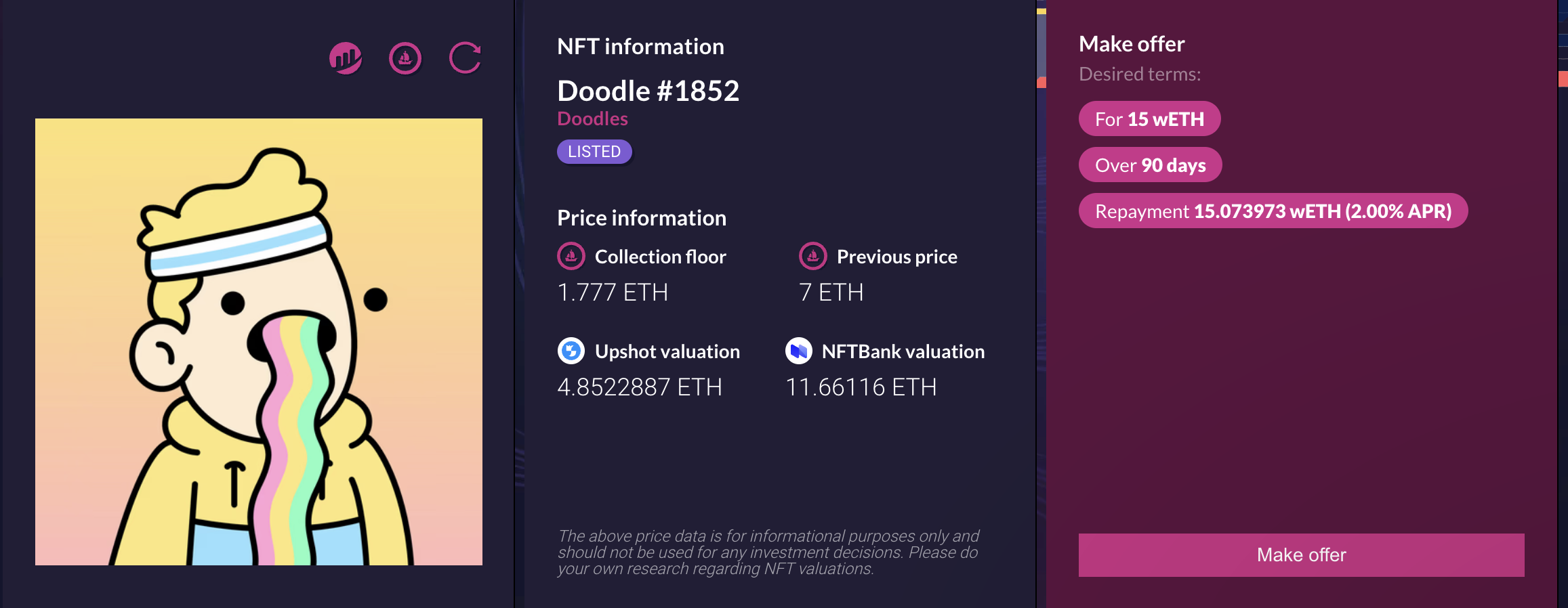
NFTfi Lending Page
In this model, the lender and borrower can participate in a 1-to-1 matching on the platform, with a lender directly lending to a borrower.
P2P mode is more similar to traditional world's mortgage loans, where the platform acts as an intermediary.
In P2P mode, all offers and transactions are completed on the platform, while the collateral is held by the platform. If the borrower defaults, the platform will auction off their collateral. Due to the "one-on-one negotiation" nature of this model, smooth transactions for such agreements depend on a large number of users and have a more "semi-manual" nature. However, the advantage is that loan transactions are more diverse and tolerant of long-tail assets.
However, specifically for P2P lending, each platform has its own differences.
Specifically, NFTfi is more similar to traditional loans. The lender can set the loan amount, loan term, interest rate, etc. If the loan defaults, the NFT assets will be pledged to the lender, and the lender will have the opportunity to acquire the NFT at a price lower than its market value.
Arcade is also a well-established lending project. The project was formerly known as Pawn.fi. Similar to NFTfi, the lender needs to initiate a loan request and set the loan category, loan amount, repayment term, and loan interest rate, and sign a binding transaction based on these details. Additionally, Arcade allows users to bundle multiple NFTs into a single NFT package and use the package as collateral. It also offers greater flexibility in loan agreements. At the end of June this year, a user packaged the FTX debt tokens that will be minted by Found as an NFT and used it as collateral to borrow $7,500 against the debt tokens valued at $31,307.81 in this protocol.
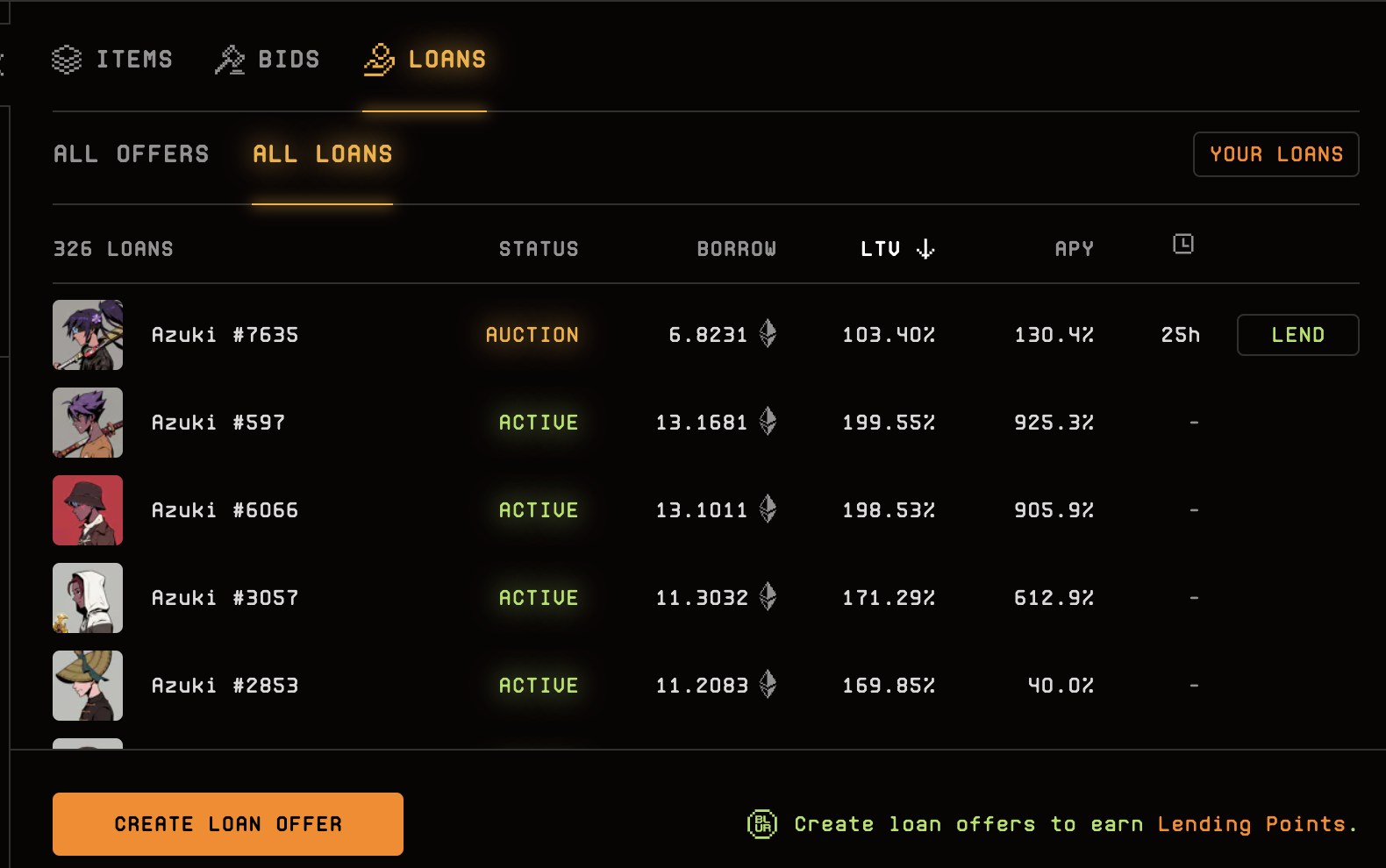
Blur Lending Loan List
Blend is a special protocol in P2P lending. This protocol does not set an expiration date and achieves the effect of "perpetual loans". As long as there are lenders willing to loan with collateral, Blend will automatically restart a loan position. On-chain transactions are only required when interest rates change or one party wants to exit the position.
For default and liquidation, Blend has different designs as well. When an auction is triggered, the borrower has 24 hours to repay the loan. If the loan is not repaid, the interest rate of the loan agreement will increase further, making the loan auction more attractive, and the loan's APY can even reach 1000%. If no one buys the loan, the lender will receive the NFT used as collateral 30 hours after the auction is triggered.
Overall, most P2P lending products in the DeFi space do not require external oracle intervention. This is the flexibility of "peer-to-peer" lending, where interest rates and loan values are negotiated and each loan is individually matched.
How Does the Protocol Loan of Liquidity Dominator Bury Hidden Dangers in the Market?
The trading of peer-to-protocol is a different lending model from P2P. Leading platforms such as ParaSpace and BendDAO have adopted this model. According to DeFiLlama data.
The high TVL also indicates the high efficiency of peer-to-protocol lending to some extent. P2P NFT lending allows more flexible and customized loans, while peer-to-protocol allows NFT holders to obtain liquidity more quickly and conveniently.
In this model, users can collateralize NFTs After that, you can directly obtain a loan from the agreement without waiting for a suitable borrower to complete a "1 to 1" match. Similar to the FT lending agreement, the funds for lending usually come from liquidity providers. By providing funds to the agreement, users can earn lending interest.

ParaSpace Loan Market
Taking ParaSpace as an example, this protocol provides users with a more intuitive and traditional FT lending market and user experience. Users can deposit NFTs and borrow various FT tokens directly from the protocol.

BendDAO Loan Market
Similar to ParaSpace, BendDAO allows users to directly initiate loans through the protocol, which then disburses loans to borrowers from a unified reserve pool.
In this model, the biggest difference from peer-to-peer NFT loans lies in the importance of external oracles. Since these loans are not loan terms agreed upon by both parties, the mechanism for liquidating default debt differs from the aforementioned P2P platforms.
Furthermore, after liquidation occurs, the NFTs will flow into the secondary market through auction, rather than being transferred to the lender. It is this difference that makes this type of model more "automated," but also introduces the risk of NFT "downward spirals".
Both BendDAO and ParaSpace use Chainlink oracles for price feeds, with OpenSea's floor price as the data source.
JPEG'd is a unique project in the mainstream NFT lending space. The protocol does not follow the conventional model of depositing NFTs and borrowing ETH. Instead, it resembles MakerDAO by allowing users to collateralize their NFTs and borrow synthetic stablecoin PUSd. Users can provide liquidity and earn interest using PUSd on the protocol. This model is called Non-fungible Debt Positions (NFDP). Similar to other peer-to-peer lending platforms, JPEG'd uses the Chainlink oracle for price feeds.
Liquidation triggers a spiral stampede?
Liquidation occurs when the health of the collateral is insufficient.
After the Azuki incident fermented, the rapid decline in Azuki prices caused the floor price of some NFTs to fall below their debt value. Taking BendDAO as an example, a total of 8 Azuki have now turned into bad debt, with collateral assets worth 59.67 ETH owing a debt of 72.47 ETH.

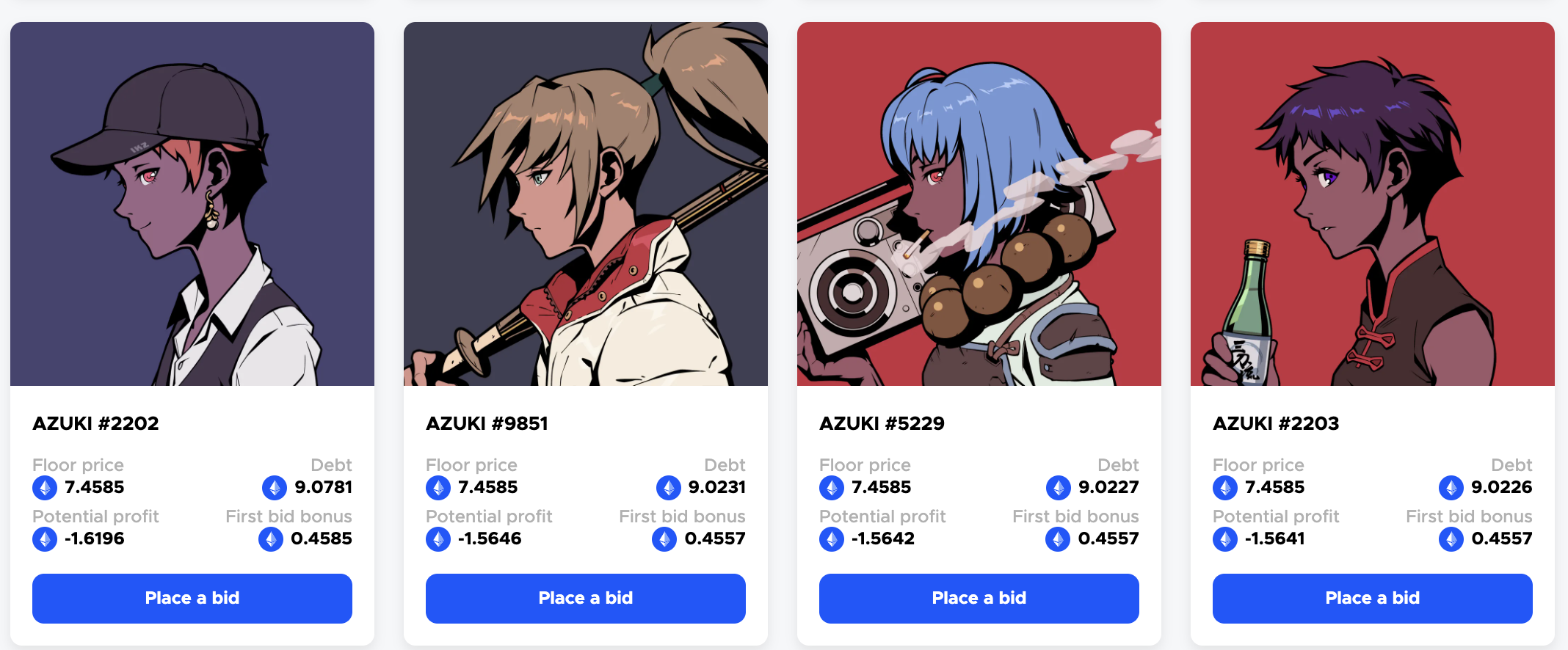
ParaSpace has also encountered a similar situation. Multiple loans on the platform have experienced a situation where the assets do not cover the liabilities.
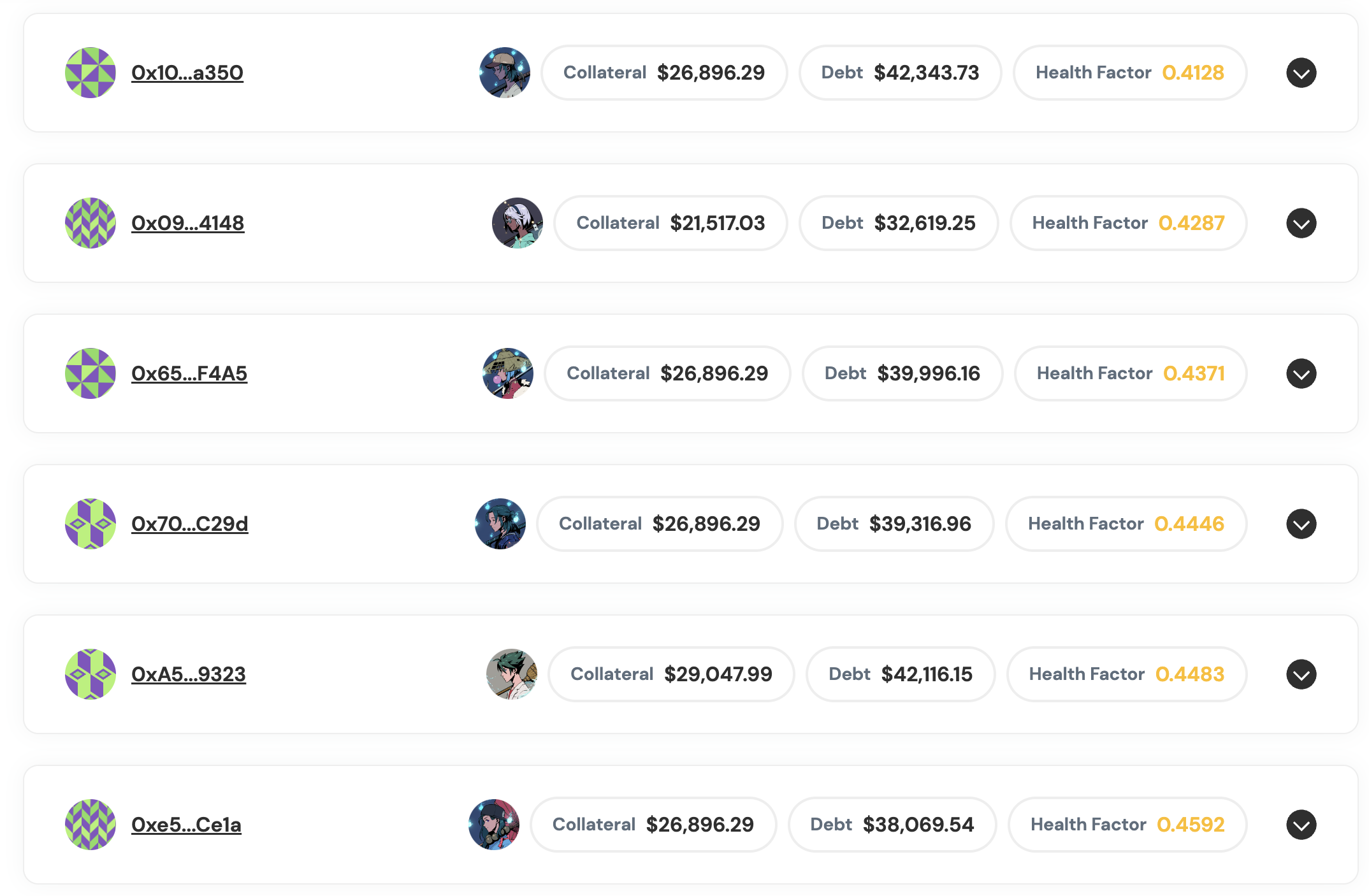
Currently, a total of 13 (out of 14) Azuki loan liquidations have been temporarily suspended by the platform, with a total collateral value of 35.99 million. ParaSpace stated that the suspension of liquidation is intended to give users more time to replenish liquidity, repay loans, and improve health metrics, and liquidation will resume later. Currently, these bad debts amount to $100,000, and ParaSpace states that it has enough reserve funds to deal with unexpected situations, and its reserve funds are fully sufficient to cover them.
How terrifying can the downward spiral caused by liquidation be?
In April of this year, the departure of BAYC whale franklin from the community (deleting wallet and quitting the community) caused people to sigh. Franklin repeatedly used BendDAO to allocate a large amount of BAYC in the case of leverage and market downturn. At one point, he owned 61 BAYC and became the 6th largest holder of BAYC. His loan amount also reached an astonishing nearly 20,000 ETH. However, due to a series of mistakes, Franklin eventually suffered significant losses and left the community as a result.
Currently, the NFT lending market is booming, bringing more liquidity, rich imagination, and usage scenarios to the market. However, with the intensification of NFT financialization, various financial risks inherent in the FT market will also brew in the NFT market. With the emergence of significant market volatility in this round, how many risks will the NFT market face in the future?



